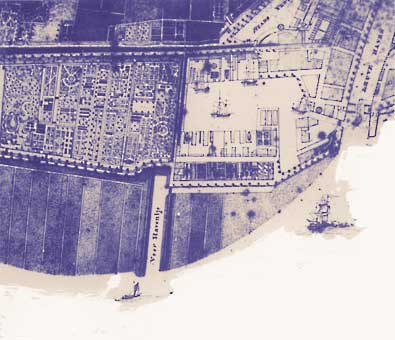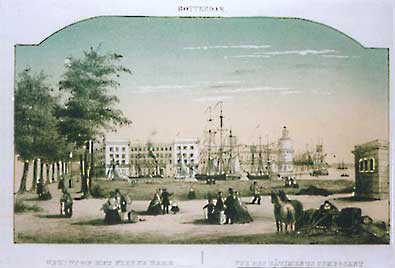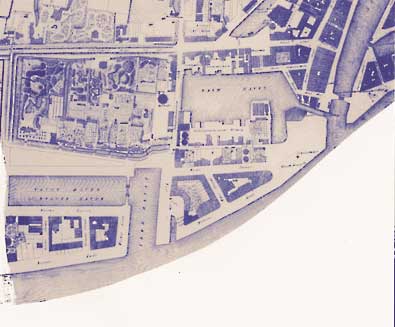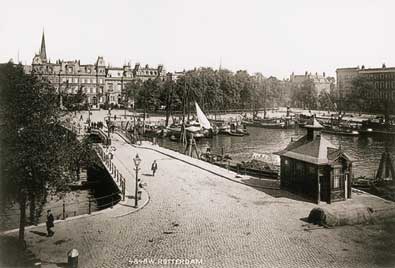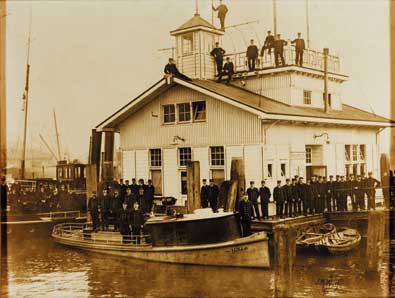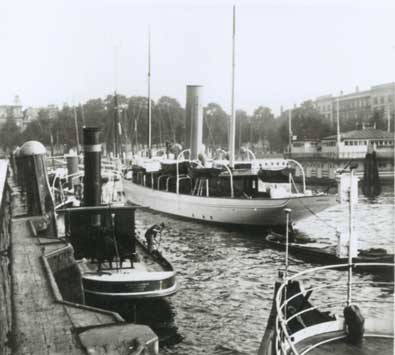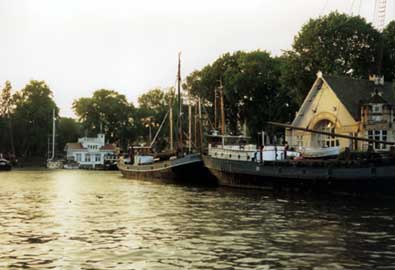Lees hier over de historie van de veerhaven Rotterdam. klik op de data en leer over de geschiedenis.
The Veerhaven is a place where locals dream of the old days when beautiful sea-going yachts of the Royal Yacht Club “De Maas” were moored there. Nowadays it is the home marina of, amongst others, sea-going schooners and luggers (loggers) which, renovated and again put into service, keep the rich maritime history of Rotterdam alive.
Too small a start
When the mudflats, west of Rotterdam, were reclaimed in the late 17th century to make place for trade and industry around the Zalmhaven, the place of departure of the Katendrecht ferry was moved from the Coolhoek – near the entrance of the present Leuvehaven – to the Pontegat, near the current Veerhaven. A city hostel was built – later to become the Leygraaff hotel and the nearby Muizenpolder developed into an idyllic living area for Rotterdam entrepreneurs, who were to lay the foundations for the subsequent World Port of Rotterdam.
After the French period Rotterdam flourished and the city experienced a shortage of berths for sea-going ships. Between 1852 and 1854 the Veerhaven and, perpendicular to it, the Westerhaven were dug in the outer dike area where, shortly before, the Nieuwewerk full of stylish merchant houses was developed. Thanks to the New Waterway Rotterdam had become an important port and for further growth a “jump to the South” was necessary. The Veer- and Westerhaven were too small for ‘modern’ iron steamships and became berth for inland vessels and tugs.
Marina
In 1852 the building of the Royal Dutch Yacht-Club (KNYC) was erected next to the Veerhaven and from then on also the yachts of club members berthed in the Veerhaven. The KNYC went bankrupt in 1879 because of the costs of the club palace, and the building became a museum which is now the World Museum. The inland vessels again prevailed, but the Westerhaven entrance remained a difficult turn to take, even for large Rhine barges. The Westerhaven was filled up in 1902 and the site was used for the construction of residential houses on the north side, adjacent to the Parklaan. On the south side the new buildings bordered on the Calandstraat, where former warehouses – now apartments – recall their former place on the waterfront. In 1909 the Royal Rowing and Sailing Club ‘De Maas’ moved to the Veerhaven and the yachts returned.
Shipping companies
The Veerhaven was apparently a pleasant place to manage ships from. In 1871 the CV Plate, Reuchlin & Co. rented an office in the KNYC building and from there started a service to the United States. From that the Holland America Line originated in 1873, whose vessels originally sailed from the Willemskade. After filling up the Westerhaven other famous companies settled around the Veerhaven: Van Uden, the Rotterdamse Lloyd and Van Nievelt, Goudriaan & Co.. On the corner of the Westerkade the legendary George van Beuningen built a impressive office in 1914-16, from which he also ran a fleet of Rhine barges, tugs and the shipping company Maatschappij Vrachtvaart. His big schooner Vigilanter was close by in the Veerhaven.
Maritime heritage
When after the Second World War shipping traffic on the Nieuwe Maas became faster and more intense, most yachts owned by members of the ‘De Maas’ moved to Zeeland, the rowers to the River Schie and later the River Rotte. The clubhouse remained important, even if business club, but around 1980 the management of the harbour became a burden. At the same time maritime heritage became popular and some inhabitants of Rotterdam rolled up their sleeves to preserve it. The Old Port was the first museum harbour in the Netherlands accommodation historical inland barges. The Leuvehaven accommodated the Maritime Museum and the Buitenmuseum which, after the merger with the foundation that managed the Old Port, became the Harbour Museum. In 1990 the Veerhaven Foundation was established, that took over the Veerhaven from the Royal Yacht Club ‘De Maas’ in order to accommodate traditional seagoing sailing ships and visiting yachts.
Dynamic and scenic
Thus, the old center of Rotterdam now prides itself with three museum harbours: not a bad score for a city which was destroyed by large-scale violence more than half a century ago. The Veerhaven not only accommodates traditional vessels, but also welcomes visiting yachts and was regularly the focus of events. Famous ones were the “Concert on the Maas’, the ‘Race of the Classics’ and the Volvo Ocean Race.
Thanks to this ‘mix’, life in the Veerhaven is more dynamic than a regular museum-harbour would be while on normal days the leafy tranquillity and beauty of the surrounding, majestic buildings are no less attractive. A real museum harbour, as the late harbourmaster Rudolf Delgorge used to tell visiting yachts who apparently were nevertheless reluctant to moor: ‘you can look further, but, really, that is meaningless; nowhere is it more beautiful than here, this is the most beautiful place in Rotterdam and beyond”.
Hans Vandersmissen (1950-2009)
The Foundation Veerhaven Rotterdam commissioned columnist Hans Vandersmissen to write a book about the history of this Paradise at the old Pontegat. The book sold out. You can however borrow the book in the Rotterdam Library. Maritime writer and columnist Hans Vandersmissen, known for his many publications and columns in the Weekly Schuttevaer, uses the famous Vandersmissen-style: very readable and recognizable.

